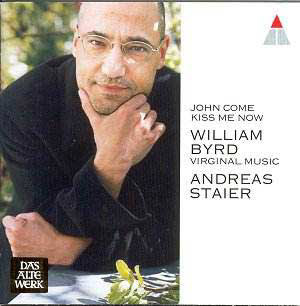 Composer: Imants Prauliņš
Composer: Imants Prauliņš
Works: Odi et amo, Fiat Lux, Eden, Quare fremuerunt gentes, I beata trinitas, Rorando coeli, Ad dianam, Ave, color vini clari, Qui creavit coelum, Pange lingua, Chorus novae Ierusalem, Ave Maris Stella, Libera Me (In memoriam Imants Prauliņš (1924-94))
Performers: Riga Dome Boys’ Choir, Martins Klisans (conductor), Armands Alksnis (guitars), Arnolds Karklis (acoustic guitar), Mara Kalnina (vocals), Aigars Godins (vocals), Edgars Janovs (vocals), Arvids Klisans (French horn), Martins Klisans (vocals)
Recording: GEM Studio, Riga, March 1999
Label: UPE Recording Company
Imants Prauliņš, a significant figure in Baltic choral music, is celebrated for his ability to weave contemporary sounds with traditional choral elements. His collection “Odi et amo” presents a vibrant tapestry of sacred and secular influences that reflect Latvia’s rich musical heritage while also embracing global pop and rock idioms. This recording, featuring the Riga Dome Boys’ Choir under the astute direction of Martins Klisans, showcases a remarkable convergence of genres, inviting scrutiny of both its musical content and its broader implications within the choral repertoire.
The performances herein are characterized by a commendable precision and a lush tonal quality that one would expect from a choir with a storied history, such as the Riga Dome Boys’ Choir. Their sound is vibrant and resonant, with the male voices exhibiting a maturity that belies their youth. The track “Rorando coeli” begins with a nod to Herbert Howells’ “Take Him Earth,” yet swiftly transforms as the rhythmic insistence of 1970s pop infiltrates its sacred fabric. This juxtaposition is emblematic of Prauliņš’ stylistic approach, which often sees him navigating between the realms of the sacred and the secular with ease.
The eclectic nature of the work is particularly evident in pieces like “Ave, color vini clari,” where electric guitar riffs evoke associations with popular music—reminiscent, perhaps, of Elton John’s “Pinball Wizard.” Such choices, while bold, may present a challenge for purists who favor traditional choral settings. In “Qui creavit,” the musical journey from medieval tonality to the flamboyance of the Tudor court before colliding with synthesizer-driven textures illustrates the composer’s audacity to blend historical styles with contemporary sensibilities. The integration of rock elements alongside choral singing, while occasionally jarring, serves to engage a modern audience, potentially broadening the appeal of sacred music.
Recording quality plays an essential role in the overall impact of this release. The sound engineering captures the robust timbres of the choir while allowing the individual contributions of instrumentalists, such as Arvids Klisans on French horn, to shine through. His melodic lines in “Jurjanu Andrejs Barcarola” resonate with a character that adds depth to the ensemble’s sound palette. However, the synthetic drum beats in “Pange lingua” detract from the choral texture, coming off as overly mechanical and predictable. A more nuanced approach to rhythm could have enhanced the expressiveness of this piece.
The choral arrangements, while inventive, sometimes succumb to the demands of accessibility, echoing the Christian cantatas of Scandinavia in the 1970s. Yet, it is this very blending of styles that may captivate younger audiences and those from evangelical backgrounds, offering an entry point into Latin liturgical texts. Such adaptability is a testament to Prauliņš’ vision and the choir’s execution of these works.
The Riga Dome Boys’ Choir stands as a paragon of excellence, and this recording serves as a testament to their capabilities. Their technical prowess and interpretative insight promise a bright future for the choral tradition in Latvia. Engaging with this collection provides a rich opportunity for listeners to explore the intersections of sacred music with contemporary influences, revealing the ongoing evolution of choral literature in a global context. The invitation to experience Prauliņš’ work is one that should not be missed, for it not only honors tradition but also boldly steps into the future.



